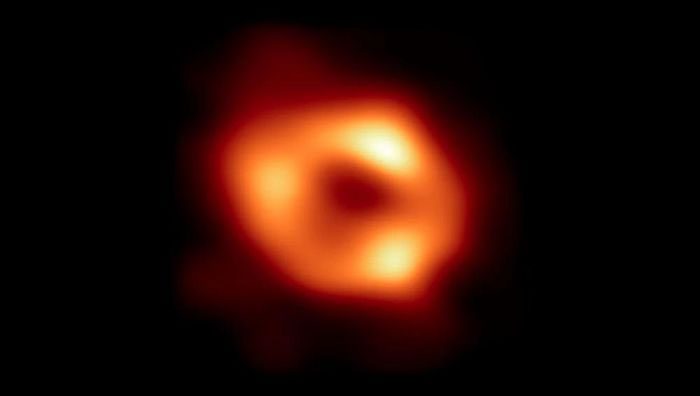The supermassive black hole at the center of the Milky Way, Sagittarius A*, is spinning rapidly and altering the spacetime around it, according to a new study.
Spacetime is a mathematical model that combines three-dimensional space with one-dimensional time to form a four-dimensional continuum. A team of physicists observed Sagittarius A*, which is located 26,000 light-years from Earth, using NASA’s Chandra X-ray Observatory. They calculated the spin rate of Sagittarius A* using the outflow method, observing radio waves and X-ray emissions detected in the matter and gas surrounding the black hole, also known as an accretion disk.
The researchers confirmed that the spinning black hole causes the Lense-Thirring effect. Also known as frame-dragging effect, Lense-Thirring describes what happens when a black hole drags spacetime along with its rotation, said Ruth Daly, the study’s lead researcher and a physics professor at Pennsylvania State University.

Supermassive black hole at the center of the Milky Way, Sagittarius A*. (Photo: NASA).
According to her, “With this rotation, Sagittarius A* is significantly changing the shape of spacetime in its vicinity.”
“If a black hole is spinning rapidly, then the spacetime around it is no longer symmetrical. The spinning black hole drags all of spacetime along with it.”
Professor Daly noted that while the changes in spacetime are not alarming, clarifying this phenomenon is very beneficial for astronomers.
“This is a great tool for understanding the role of black holes in the formation and evolution of galaxies. In reality, they are dynamic entities that can influence and interact with galaxies. This is quite fascinating,” she added.
The spin of a black hole has a value ranging from 0 to 1, where 0 means the black hole is not spinning and 1 indicates maximum spin. There had previously been no consensus on the spin value for Sagittarius A. However, thanks to the outflow method—the only method using information from outflows and matter in the surrounding area of the black hole—Sagittarius A* has been determined to have a spin value between 0.84 and 0.96, while the M87* black hole, located in the Virgo galaxy cluster 55 million light-years from Earth, spins at a value of 1 (with an uncertainty of plus or minus 0.2).
Understanding the mass and spin of black holes helps astronomers comprehend how they form and evolve. Black holes formed from the merger of smaller black holes tend to have lower spin values, according to Dejan Stojkovic, a cosmology professor at the University of Buffalo who did not participate in the study. However, a black hole formed from the accretion of surrounding gas will have a higher spin.
The spin value of Sagittarius A* indicates that a significant portion of its mass comes from accretion.
“The question of whether the black hole at the center of the galaxy is spinning, or how fast it spins, is very important,” Professor Stojkovic evaluated.


















































